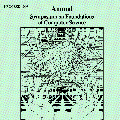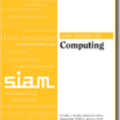The matroid intersection problem is a fundamental problem that has been extensively studied for half a century. In the classic version of this problem, we are given two matroids $\mathcal{M}_1 = (V, \mathcal{I}_1)$ and $\mathcal{M}_2 = (V, \mathcal{I}_2)$ on a comment ground set $V$ of $n$ elements, and then we have to find the largest common independent set $S \in \mathcal{I}_1 \cap \mathcal{I}_2$ by making independence oracle queries of the form "Is $S \in \mathcal{I}_1$?" or "Is $S \in \mathcal{I}_2$?" for $S \subseteq V$. The goal is to minimize the number of queries. Beating the existing $\tilde O(n^2)$ bound, known as the quadratic barrier, is an open problem that captures the limits of techniques from two lines of work. The first one is the classic Cunningham's algorithm [SICOMP 1986], whose $\tilde O(n^2)$-query implementations were shown by CLS+ [FOCS 2019] and Nguyen [2019]. The other one is the general cutting plane method of Lee, Sidford, and Wong [FOCS 2015]. The only progress towards breaking the quadratic barrier requires either approximation algorithms or a more powerful rank oracle query [CLS+ FOCS 2019]. No exact algorithm with $o(n^2)$ independence queries was known. In this work, we break the quadratic barrier with a randomized algorithm guaranteeing $\tilde O(n^{9/5})$ independence queries with high probability, and a deterministic algorithm guaranteeing $\tilde O(n^{11/6})$ independence queries. Our key insight is simple and fast algorithms to solve a graph reachability problem that arose in the standard augmenting path framework [Edmonds 1968]. Combining this with previous exact and approximation algorithms leads to our results.
翻译:在半个世纪以来广泛研究过的一个根本性问题中, 交错的问题是一个基本问题。 在这个问题的经典版本中, 我们被给了两个 materoid $\ mathcal{M ⁇ 1 = (V,\ mathcal{I ⁇ 1) $ 和 mathcal{M ⁇ 2 = (V,\ mathcal{I ⁇ 2) = (V,\ mathcal{I} =2) 。 然后我们必须找到最大的共同独立设定 $S \ in mathcell {I_ directral{ massal{M} =(I}1\ captral=max =macal_maxal_lational_lational_lational_lational_lational_lational_lational_lational_lational_lor_lor_l_l_l_l_l_l_l_l_l_l_l_l_l_l_l_l_l_l_l_l_l_l_l_l_l_l_l_l_l_l_l_l_l_l_l_l_l_l_l_l_l_l_l_l_l_l_l_l_l_l_l_l_l_l_l___l_l_l_l_l_l__l_l_l_l_l_l__l_l__l_l_l_l_l_l_l_l_l_l_l_____l_________________l_l_l_l_l_l_l_l_l_l______l_l_____l_l_l_l___________l_l_l_l_l_l_l_l_l_l_l_l_l_l_l_l_l_l_l_l_l_l_l_l_l_l_____l_l_l_




